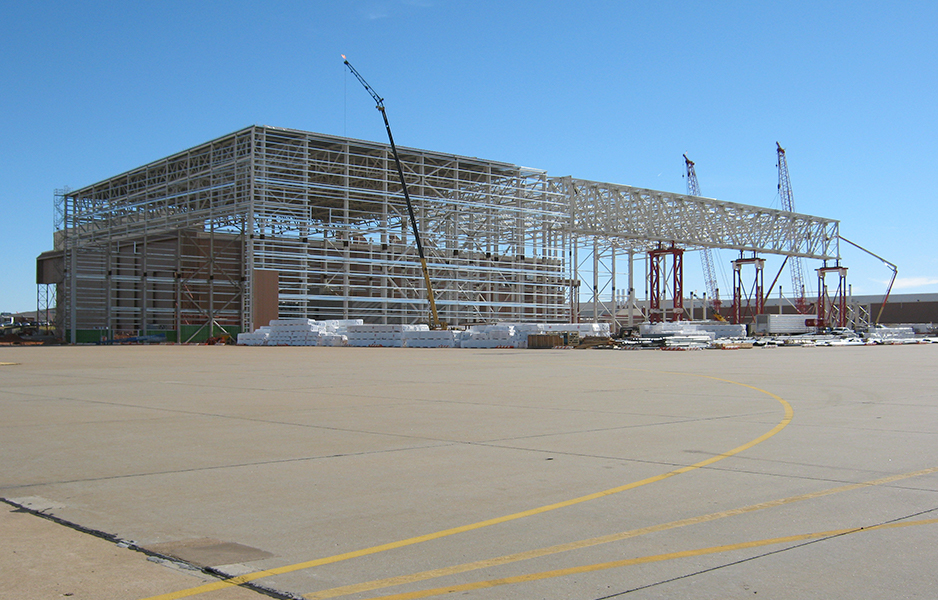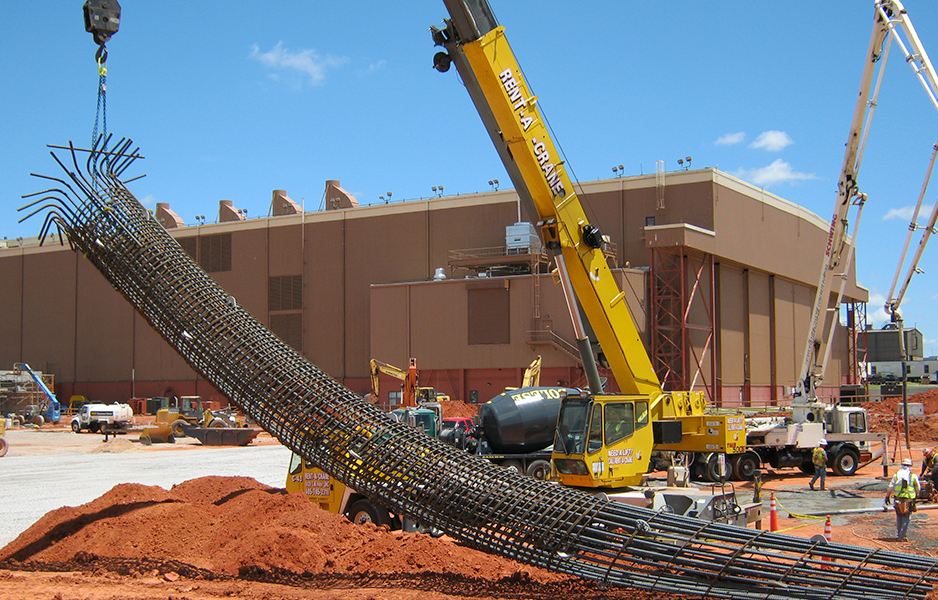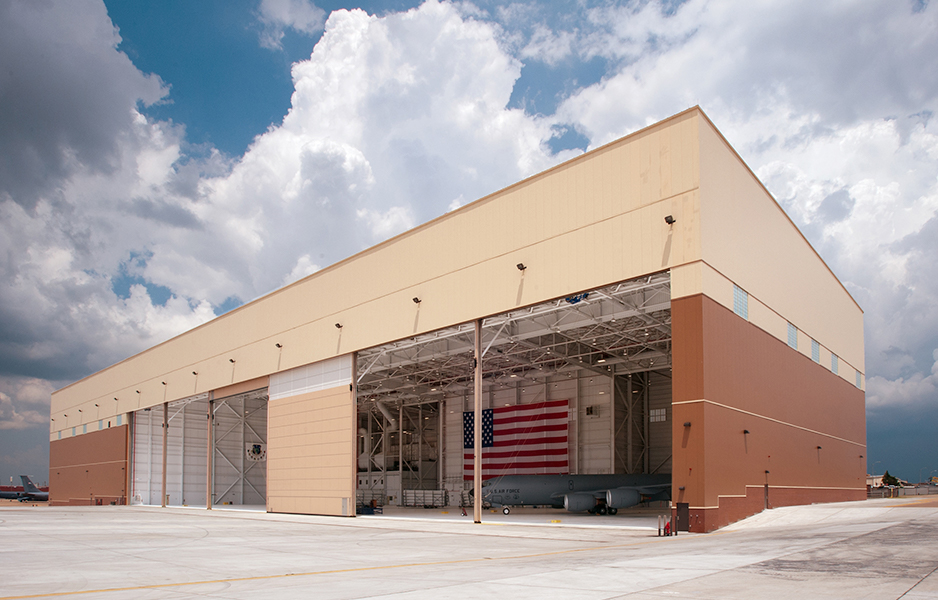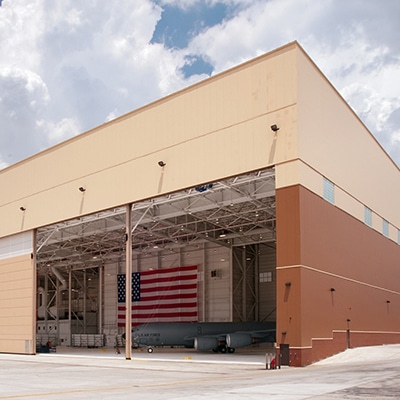There’s always more than meets the eye on hangar construction jobs. These complex projects are an exercise in careful choreography as they’re are almost always done while airfield operations remain ongoing.
A hanger we built at Tinker Air Force Base in Oklahoma City exemplifies all the unique facets of a hangar construction project. The 164,000-square-foot hangar is longer than two football fields end to end (675 feet, to be exact) and is 239 feet wide. Plus, we built a free-standing three-story office space inside it. Here are some of the challenges we met head-on:
A big, flat floor
With a hangar that big, you need a lot of concrete. We’re talking on the order of 1,900 truckloads of it. As described above, dramatic grade changes are a recipe for disaster. Total grade change across the whole Tinker AFB hangar floor is just half a percent. After shot steel blasting the floor twice to prepare it, 1,600 gallons of epoxy coating was applied to protect it against repeated impact and any chemical damage.

Anchoring the building
Serious hardware is required to keep a massive hangar anchored to the ground. Ninety-four steel-reinforced concrete piers ranging in diameter from two to four feet were installed between 40 and 60 feet into the earth. Then, we buried hundreds of eight-foot-long anchor bolts into the piers. The hangar isn’t going anywhere.
Installing the door
The main doors at the Tinker AFB hangar are huge. One is 218 feet across and the other is 428 feet across. The larger of the doors was so expansive we had to use three 80-foot tall structural bridges to heft its header into place in four separate pieces. Here’s how we did it:
The first piece of the header was set to an existing stanchion and spanned to the first structural bridge. Then the second piece was lifted into place and spanned the distance between the first and second bridge. The third piece was lifted and set into place onto the second and third bridge. The final piece was then set and spanned from the third bridge to the other existing stanchion.
FOD control
Airfield managers mean business when it comes to FOD control. It started with an intensive FOD control training course our workers completed before getting started. The following precautions were taken during construction:
- Only covered dumpsters were allowed on the site so that discarded materials wouldn’t ride a frequent Oklahoma wind gust into the path of any aircraft.
- One worker’s main job was to run a street sweeper around the construction site while another painstakingly hosed off every single tire of every single vehicle that entered the construction area.
- A check-in system to account for every tool brought to the site was adopted to eliminate the risk of missing tools becoming FOD.
- Prior to engine startup, airmen drove around planes with a large magnet that would attract any metal objects near a plane.
- Even portable toilets were anchored to the ground.
Other hangar construction jobs
We’re seriously proud of our work at Tinker AFB, but we hang our hard hats on more than just that one job. Consider these other hangar construction projects we’ve delivered across the U.S.:
- Naval Air Station Whidbey Island, WA – Our work included a full modernization and the addition of 7,000 square feet of space each to two maintenance bays in Hangar 6 and an extension of Hangar 9. We also managed the overhaul of the site’s 55-year-old Hangar 5.
- U.S. Customs and Border Protection, Oklahoma City, OK – This project included the construction of 41,500 square feet of aircraft support space and 26,000 square feet of additional maintenance shops and offices.
- Luke AFB, AZ – The hangar clocks in at 18,740 square feet and is designed to house four F-35 aircraft. The structure also includes a tool room, break rooms and lavatories.
- Midcoast Aviation, Sauget, IL – The 40,000-square-foot hangar can house commercial-size airliners. It’s the second such hangar we’ve built at the St. Louis Downtown Airport right in our back yard near St. Louis.
An experienced hangar construction company
The Korte Company has added many successful hangar construction builds to its résumé over the years. That means we’ve earned the trust of civilian airport managers and military commanders alike, delivering quality structures on-budget, on-time, no matter what.
If you’re considering a new hangar construction or renovation job, we want to hear about it. Tell us about the project here. If you’re still weighing your options, this guide on managing a hangar construction project from start to finish is a great resource.


